Animals and Housing
In this study, 60 females White Leghorn laying hens from Lohmann Sverige AB were hatched and transported to Linköping’s University. Upon their arrival they were placed in 6 home pens housing 10 chickens each, sorted according to the upcoming treatment As such, 30 chickens were chosen to be play enriched and the remaining 30 were used as control.
Weight
Chicks were weighted at 2 (n=62), 8 (n=61), 15 (n=61), 22 (n=60), 29 (n=60), 36 (n=60), 43 (n=60), 50 (n=60) and 57 (n=60) days of age.
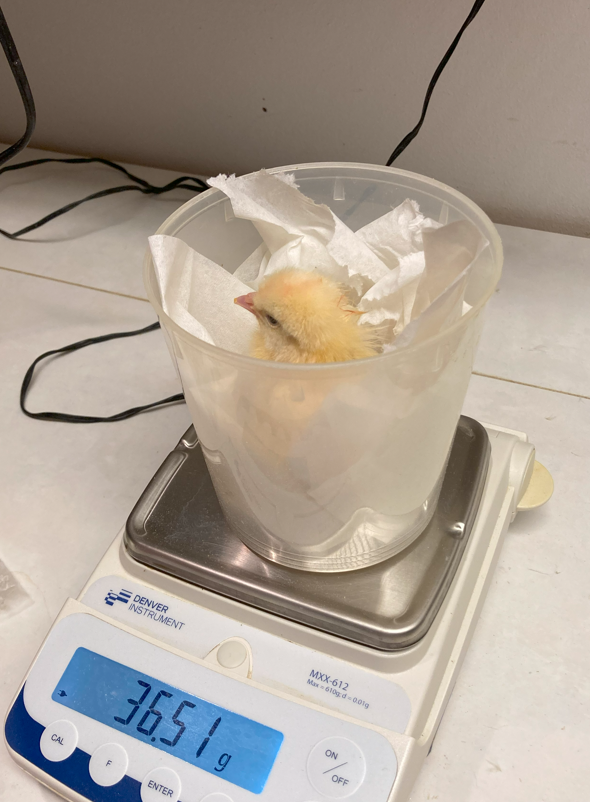
Play Enrichment
the four play arenas were 117 x 80 x 100 cm and furnished with wood shavings, rubber worms (6cm), red plastic strips (44 x 6 cm), metals rings tied on a rope (38cm, rings tied every 5cm), and green meshed ropes (10 and 20 cm) all dispersed on the ground. Parrot bells, CD-ROMs and dangling chains were tapped on the ceiling of the arena 1 cm above the ground. Items were hoisted up as the chicks grew and always kept at their sight level.
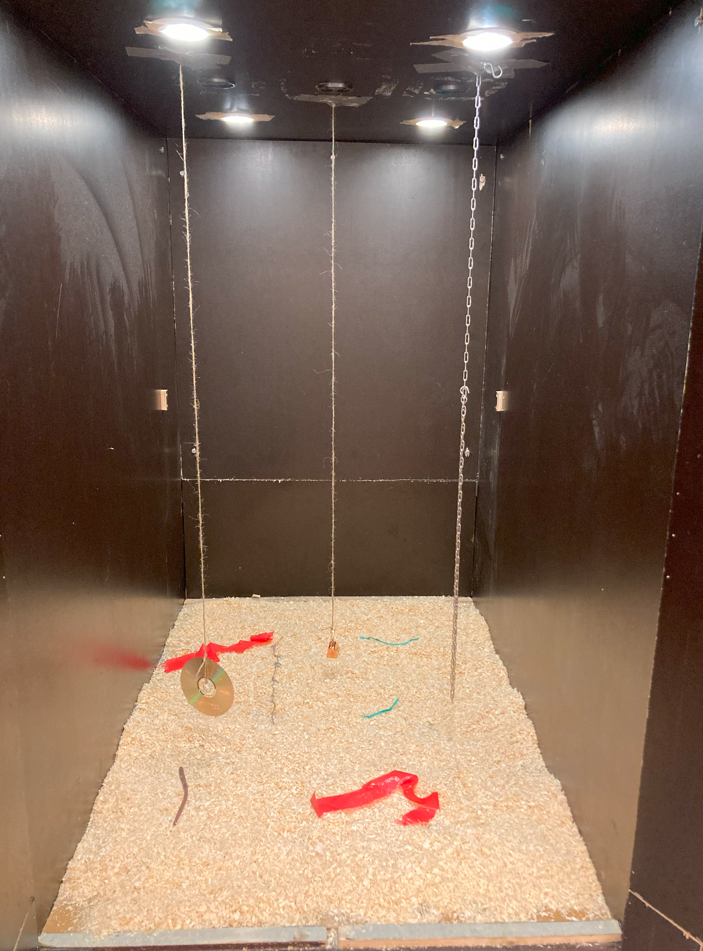
To avoid biases related to transportation or handling, it is essential to control these factors for the control group especially since the play-enriched chickens are being moved for each play session. Cardboard control boxes were 58 x 35 x 41 cm and contained wood shavings. Water ad libitum was provided during each session.

Play stimulation and controls for handling were conducted three times per week for six weeks. Each session lasting 30 minutes
Handling Scores
Notable behavioural shifts were noted during the play enrichment period therefore a handling score protocol was elaborated and applied at day 43,50 and 57 of the experiment after play enrichment.
Social Reinstatement
At 45 days of age, social reinstatement tests were conducted. Play arenas were reconfigured to be 100 x 40 x 100 cm runways. Start and stimulus zones were defined 20 cm from the edges of the arena and 17 x 40 cm holding compartments containing subgroup-based conspecifics were placed behind the stimulus arena.
After switching the lights off, a chick was fetched from the holding compartment and introduced through a hatch near the start zone for each arena. Lights were turned back on at the start of the experiment and birds were then observed for 5 minutes. After the given time, a chick was switched from the holding compartment to the start zone and vice versa
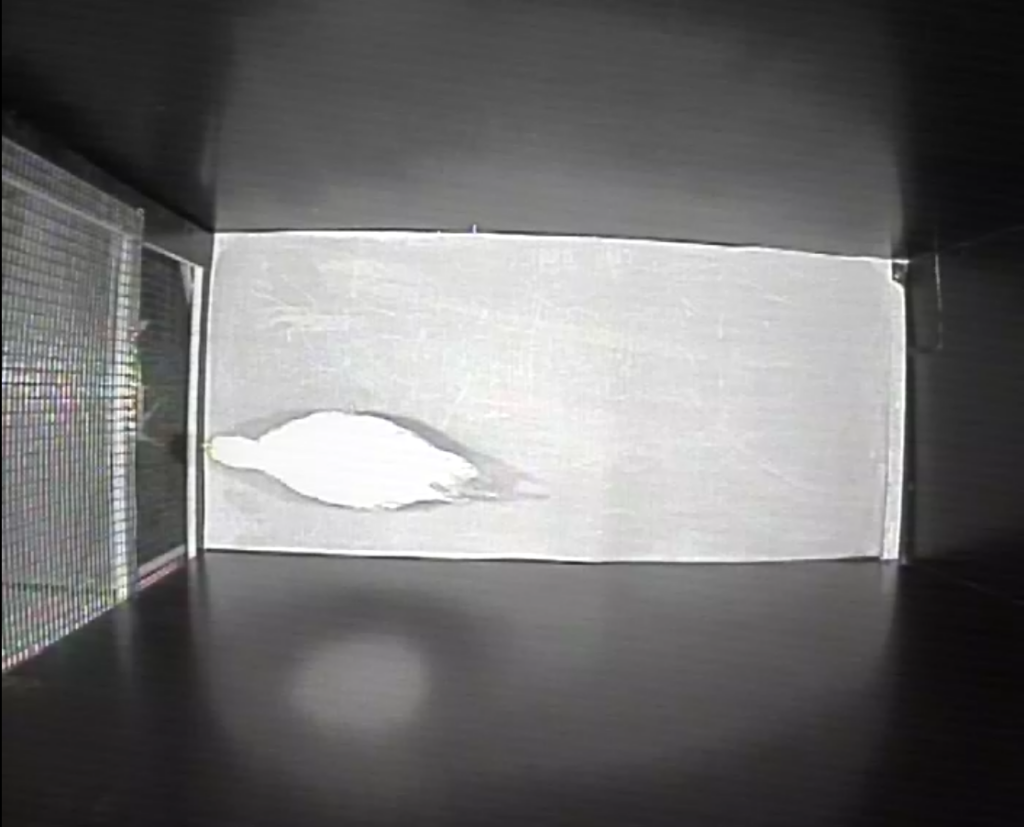
Cognitive Judgement Bias
At 46-47 days of age, chicks were subjected to a cognitive judgment bias test . The arenas used are identical to the one used by Hedlund et al. 2021. Subjects were tested one by one with 4 of their subgroups pen mates waiting in the conspecifics arena of the setup. Each chick was fetched from its home pen and placed in a starting box for 5 s before being released into a corridor with stimuli cues tapped at the end of the pathway. the time chicks took to reunite with their pen mates through the grid was measured once they passed the corner after the stimulus cue. After 5 min the test stopped and chicks that did not reach their conspecifics were assigned the maximal time of 300s.

The mirror was presented first and considered a baseline. The owl and the chicken pictures were shown thereafter in a random order for each chick, respectively representing a more negative and positive stimuli. The morph was considered to be the ambiguous stimuli and presented last.

A longer approach time towards the stimuli indicated a more pessimistic outlook, as the chickens appeared to avoid passing by the cues
Novel Arena and Novel Object
At day 52, fear of novelty was measured through activity levels and in approaches toward novel objects. The novel arenas were 72×72 cm squares with a circle rounding the edges.
The novel arena was divided into 4 imaginary quadrants to facilitate locomotor activity estimations. For the novel object, imaginary inner (<1cm to 5cm) and outer (>5cm) circles were drawn around the object for the same purposes
Chicks were observed for 10 minutes in the novel arena before introducing a fishing lure as a novel object then observed again for 5 minutes
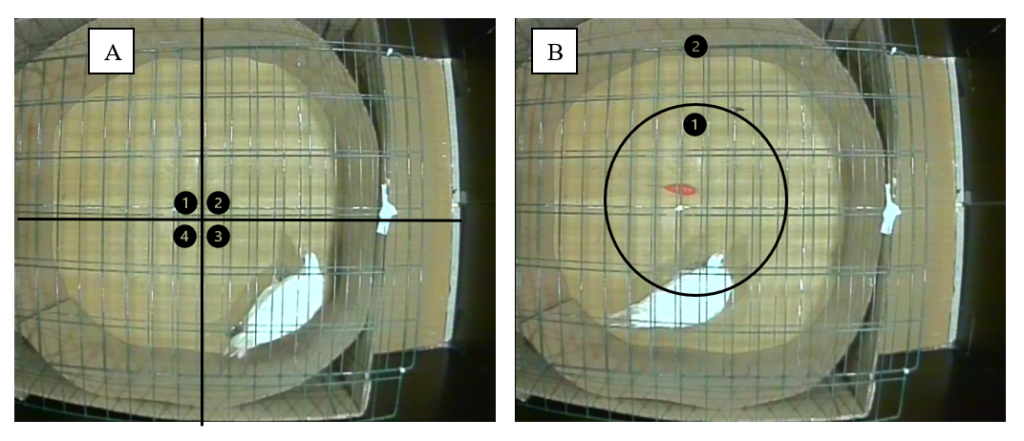
Tonic Immobility
At day 55, Tonic immobility tests were performed. Chick were randomly selected from their home pen and placed in a cradle situated in the same room. Birds were placed on their backs onto the cradle and maintained in that position for 10 s. Chicks that lifted themselves upward within 5 s did not enter TI and were replaced following the same procedure two additional times before being removed from the experiment. The latency to flip upward was noted.
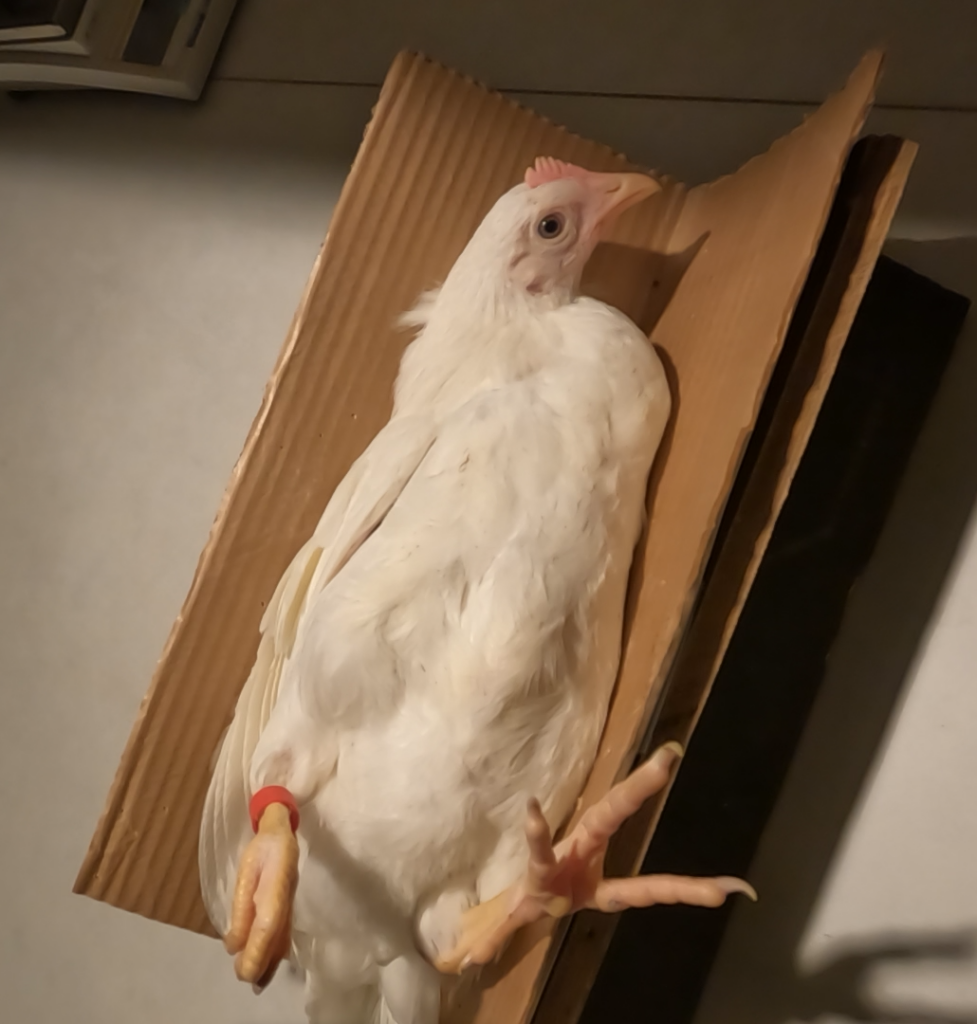
Restraint Test and Blood Sampling for Corticosterone Analysis
At day 57, Chicks were randomly selected from their home pens and blood samples were taken from the brachial vein immediately after capture to establish a corticosterone level baseline before restraint. Then, birds were individually suspended in a net bag for 3 minutes to trigger corticosterone responses and a second blood sample was taken right after. The restraint test involved holding an animal in place for a brief period to induce stress and measure their physiological response. Samples were centrifugated the same day, separating the plasma from the blood and were stored in a -80°C freezer waiting to be processed. Analysis was performed 4 months later with a corticosterone ELISA kit from ENZO Life Sciences.
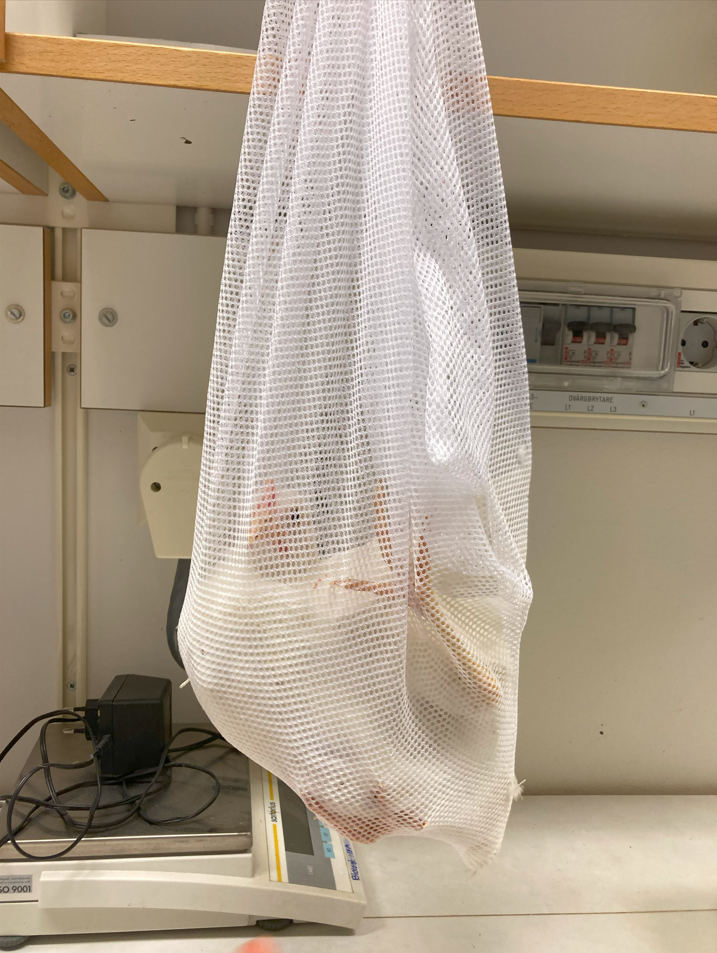
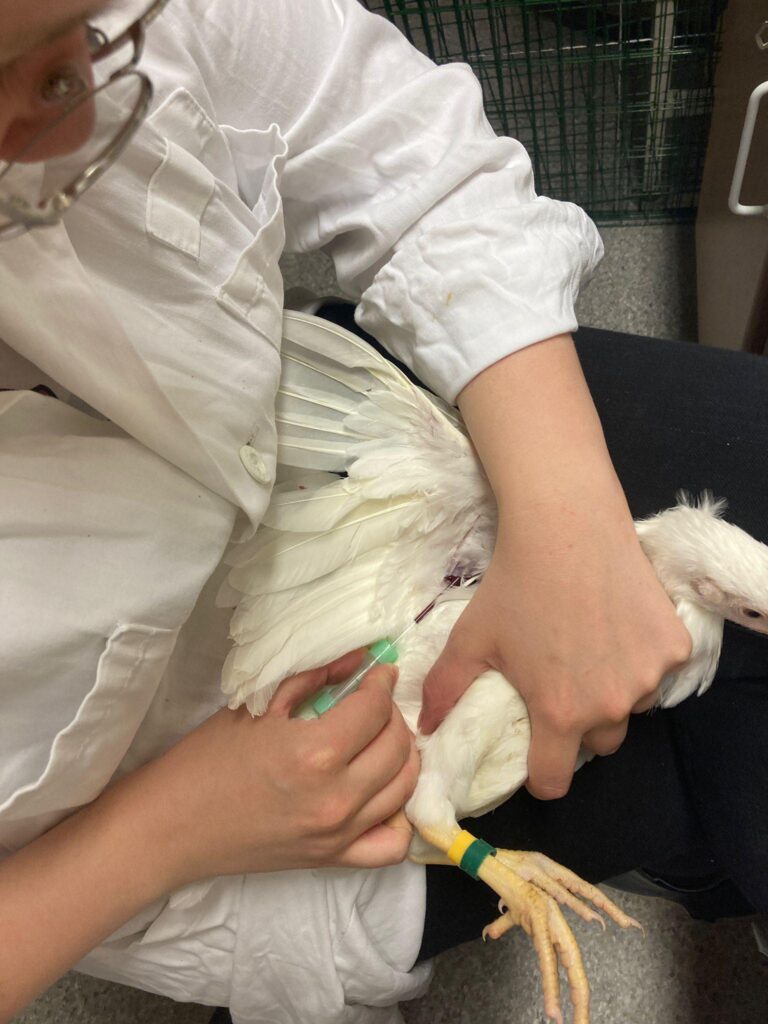
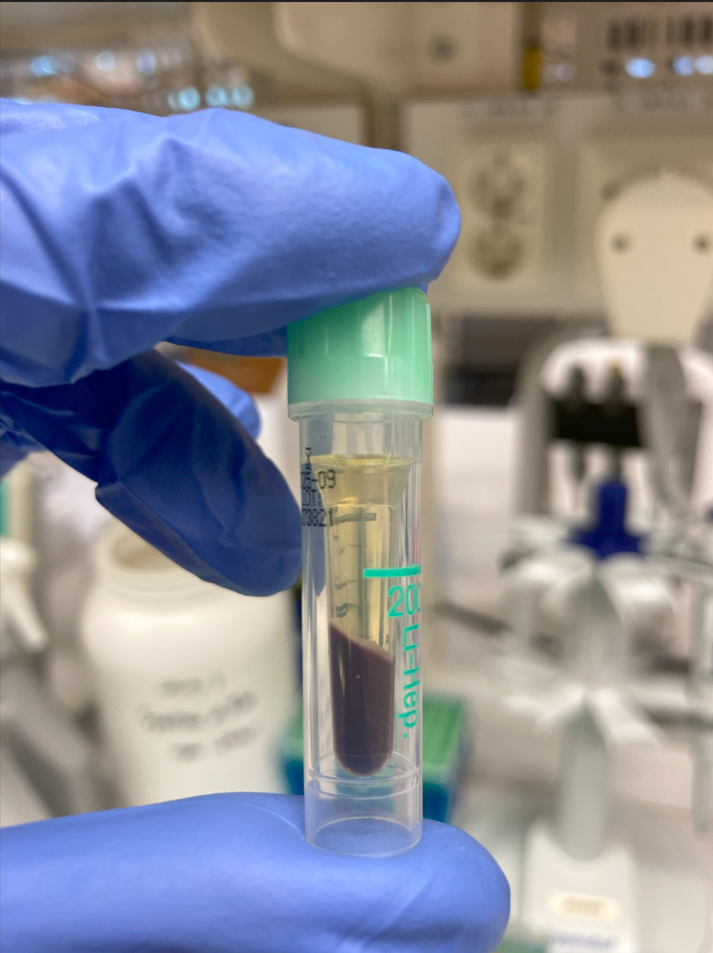
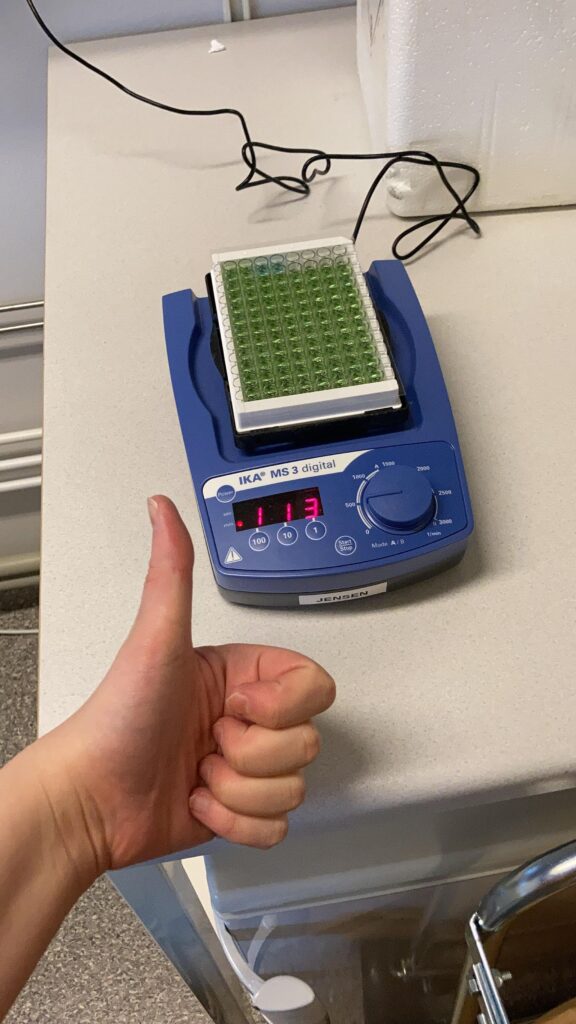
Data Analysis and Statistics
Statistical analyses were performed with the IBM SPSS Statistics 29.0.0.0 software and MS Excel 2018. Cognitive judgment bias and corticosterone levels were analysed with a generalized linear model with treatment (Play/Control). Weight, social reinstatement, Tonic immobility, novel arena and novel object were analysed by comparing means via independent samples t-tests. Handling scores were assessed with a non-parametric Man Whitney U test. The units of replication for each test were individual chickens, with one unit being equal to one chicken.